MARINO MARINI (1901-1980)Cavallo stamped with the raised artist's initials 'MM' (on the top of the base) bronze with grey-brown patina 28 1/8 in (71.4 cm) (height) Conceived in 1942. This bronze version cast in an edition of 6 FootnotesThe authenticity of this work has been confirmed by the Fondazione Marino Marini Provenance Amalia de Schulthess Collection, Santa Monica (acquired directly from the artist). Thence by descent to the present owner. Literature U. Apollonio, Marino Marini Sculptor, Milan, 1953 (another cast illustrated; titled 'Study for the Horse'). H. Read, P. Waldberg, & G. di San Lazzaro, Marino Marini L'oeuvre complèt, Paris, 1970, no. 123 (cast with the round base illustrated p. 339). C. Pirovano, Marino Marini scultore, Milan, 1972, no. 132 (cast with the round base illustrated). M. De Micheli, Marino Marini Sculture, pitture, disegni dal 1914 al 1971, exh. cat., Venice, 1983 (another cast illustrated p. 111; titled 'Piccolo cavallo'). G. Habarta, Marino Marini (1901–1980), Plastiken, Bilder, Zeichnungen, exh. cat., Munich, 1984 (cast with the round base illustrated). G. Contini et al., Marino Marini Milan, 1988 (plaster version illustrated p. 88). J-M. Drot, M. Calvesi & E. Steingräber, Marino Marini antologica 1919–1978, exh. cat., Rome, 1991 (another cast illustrated p. 61). D. Eccher (ed.), Marino Marini exh. cat., Trento, 1992 (another cast illustrated p. 53). G. Plazy et al., Marino Marini Paris, 1993 (another cast illustrated pl. 2). M. Moustashar, Marino Marini Sculptures & dessins, Paris, 1995 (another cast illustrated p. 53). E. Steingraber, Marino Marini aus der Sammlung Marina Marini: Gemälde, Skulpturen, Zeichnungen, Munich, 1995 (another cast illustrated). M. Meneguzzo, Marino Marini Cavalli e cavalieri, Milan, 1997 (plaster version and another cast illustrated p. 74 & p. 209). M. Bazzini et al., Marino Marini Sculture, dipinti, disegni, exh. cat., 1997 (another cast illustrated p. 33). M. Beretta (ed.), Marino Marini Catalogue Raisonné of the Sculptures, Milan, 1998, no. 173b (another cast illustrated p. 122). B. Cinelli & F. Fergonzi (eds.), Marino Marini Visual Passions, Silvana, 2017 (another cast illustrated p. 179). Conceived in 1942, Cavallo embodies Marino Marini's genius of the equine form, an illustrious subject which permeates throughout the sculptor's career. The refined naturalism and delicate contrapposto pose of the present lot evokes classical sculpture, while the monumental form of the body and raw treatment of the surface indicates the artist's engrossment with new volumetric structures. Marini's choice of subject stems from an enduring tradition of equestrian painting and sculpture that holds a prominent place in the discourse of Western art. Deeply inspired by the classicism of Etruscan art, Marini considered himself to be a descendant of the ancient civilization, stating: "My archaism, my Etruscans, there is not much to explain. My identity was born there, in that region. Those are my grandfathers. It's a civilization that still today surfaces on the ground, something that still feeds those who are alive. I feel extremely attached to my land, to this folk, archaic feeling so alive and intelligent. It's in my blood, I cannot get rid of it" (Marino Marini quoted in M. Manera (ed.), Marino Marini sculture, pitture, disegni dal 1914 al 1977, exh. cat., Venice, 1983, p. 16). Grounded in this tradition, Cavallo emits a spiritual and mystical character symbolic of a timeless humanity. Dating from the years of World War II, Cavallo was created at a point when Marini's style, previously serene, began to change dramatically into a more expressionist language. Whereas his earlier representations focused on the connection between horse and rider, by the 1940s his horses would embody a new individuality as their own autonomous subject. Marini examined the horse's muscular form in various iterations, playing with proportion, stance, attitude, shape, and size. Cavallo is a mer
MARINO MARINI (1901-1980)Cavallo stamped with the raised artist's initials 'MM' (on the top of the base) bronze with grey-brown patina 28 1/8 in (71.4 cm) (height) Conceived in 1942. This bronze version cast in an edition of 6 FootnotesThe authenticity of this work has been confirmed by the Fondazione Marino Marini Provenance Amalia de Schulthess Collection, Santa Monica (acquired directly from the artist). Thence by descent to the present owner. Literature U. Apollonio, Marino Marini Sculptor, Milan, 1953 (another cast illustrated; titled 'Study for the Horse'). H. Read, P. Waldberg, & G. di San Lazzaro, Marino Marini L'oeuvre complèt, Paris, 1970, no. 123 (cast with the round base illustrated p. 339). C. Pirovano, Marino Marini scultore, Milan, 1972, no. 132 (cast with the round base illustrated). M. De Micheli, Marino Marini Sculture, pitture, disegni dal 1914 al 1971, exh. cat., Venice, 1983 (another cast illustrated p. 111; titled 'Piccolo cavallo'). G. Habarta, Marino Marini (1901–1980), Plastiken, Bilder, Zeichnungen, exh. cat., Munich, 1984 (cast with the round base illustrated). G. Contini et al., Marino Marini Milan, 1988 (plaster version illustrated p. 88). J-M. Drot, M. Calvesi & E. Steingräber, Marino Marini antologica 1919–1978, exh. cat., Rome, 1991 (another cast illustrated p. 61). D. Eccher (ed.), Marino Marini exh. cat., Trento, 1992 (another cast illustrated p. 53). G. Plazy et al., Marino Marini Paris, 1993 (another cast illustrated pl. 2). M. Moustashar, Marino Marini Sculptures & dessins, Paris, 1995 (another cast illustrated p. 53). E. Steingraber, Marino Marini aus der Sammlung Marina Marini: Gemälde, Skulpturen, Zeichnungen, Munich, 1995 (another cast illustrated). M. Meneguzzo, Marino Marini Cavalli e cavalieri, Milan, 1997 (plaster version and another cast illustrated p. 74 & p. 209). M. Bazzini et al., Marino Marini Sculture, dipinti, disegni, exh. cat., 1997 (another cast illustrated p. 33). M. Beretta (ed.), Marino Marini Catalogue Raisonné of the Sculptures, Milan, 1998, no. 173b (another cast illustrated p. 122). B. Cinelli & F. Fergonzi (eds.), Marino Marini Visual Passions, Silvana, 2017 (another cast illustrated p. 179). Conceived in 1942, Cavallo embodies Marino Marini's genius of the equine form, an illustrious subject which permeates throughout the sculptor's career. The refined naturalism and delicate contrapposto pose of the present lot evokes classical sculpture, while the monumental form of the body and raw treatment of the surface indicates the artist's engrossment with new volumetric structures. Marini's choice of subject stems from an enduring tradition of equestrian painting and sculpture that holds a prominent place in the discourse of Western art. Deeply inspired by the classicism of Etruscan art, Marini considered himself to be a descendant of the ancient civilization, stating: "My archaism, my Etruscans, there is not much to explain. My identity was born there, in that region. Those are my grandfathers. It's a civilization that still today surfaces on the ground, something that still feeds those who are alive. I feel extremely attached to my land, to this folk, archaic feeling so alive and intelligent. It's in my blood, I cannot get rid of it" (Marino Marini quoted in M. Manera (ed.), Marino Marini sculture, pitture, disegni dal 1914 al 1977, exh. cat., Venice, 1983, p. 16). Grounded in this tradition, Cavallo emits a spiritual and mystical character symbolic of a timeless humanity. Dating from the years of World War II, Cavallo was created at a point when Marini's style, previously serene, began to change dramatically into a more expressionist language. Whereas his earlier representations focused on the connection between horse and rider, by the 1940s his horses would embody a new individuality as their own autonomous subject. Marini examined the horse's muscular form in various iterations, playing with proportion, stance, attitude, shape, and size. Cavallo is a mer

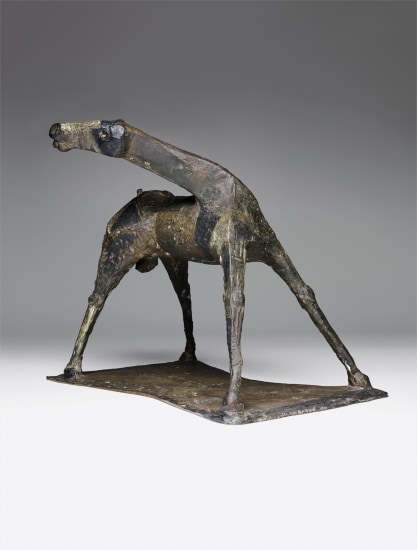
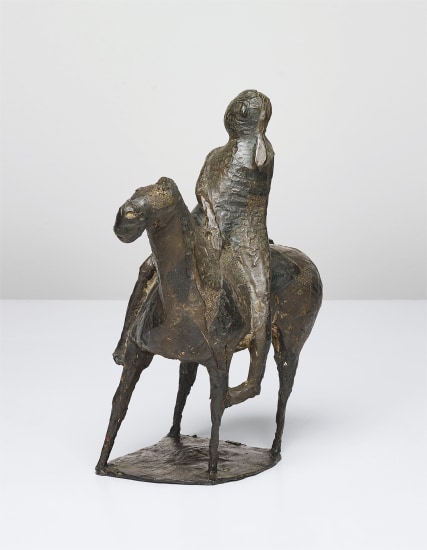

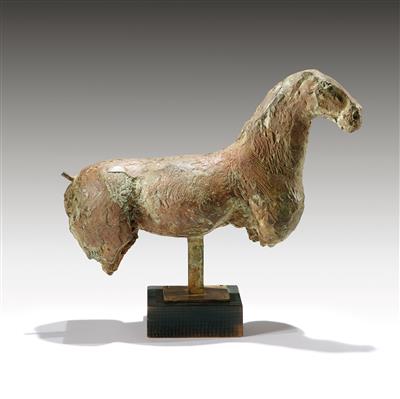
.jpg)

.jpg)
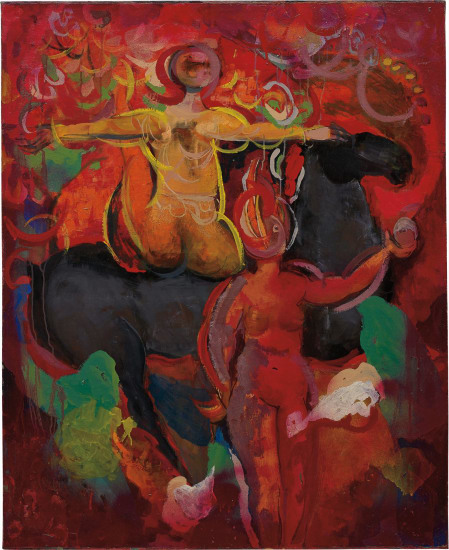
.jpg)
.jpg)


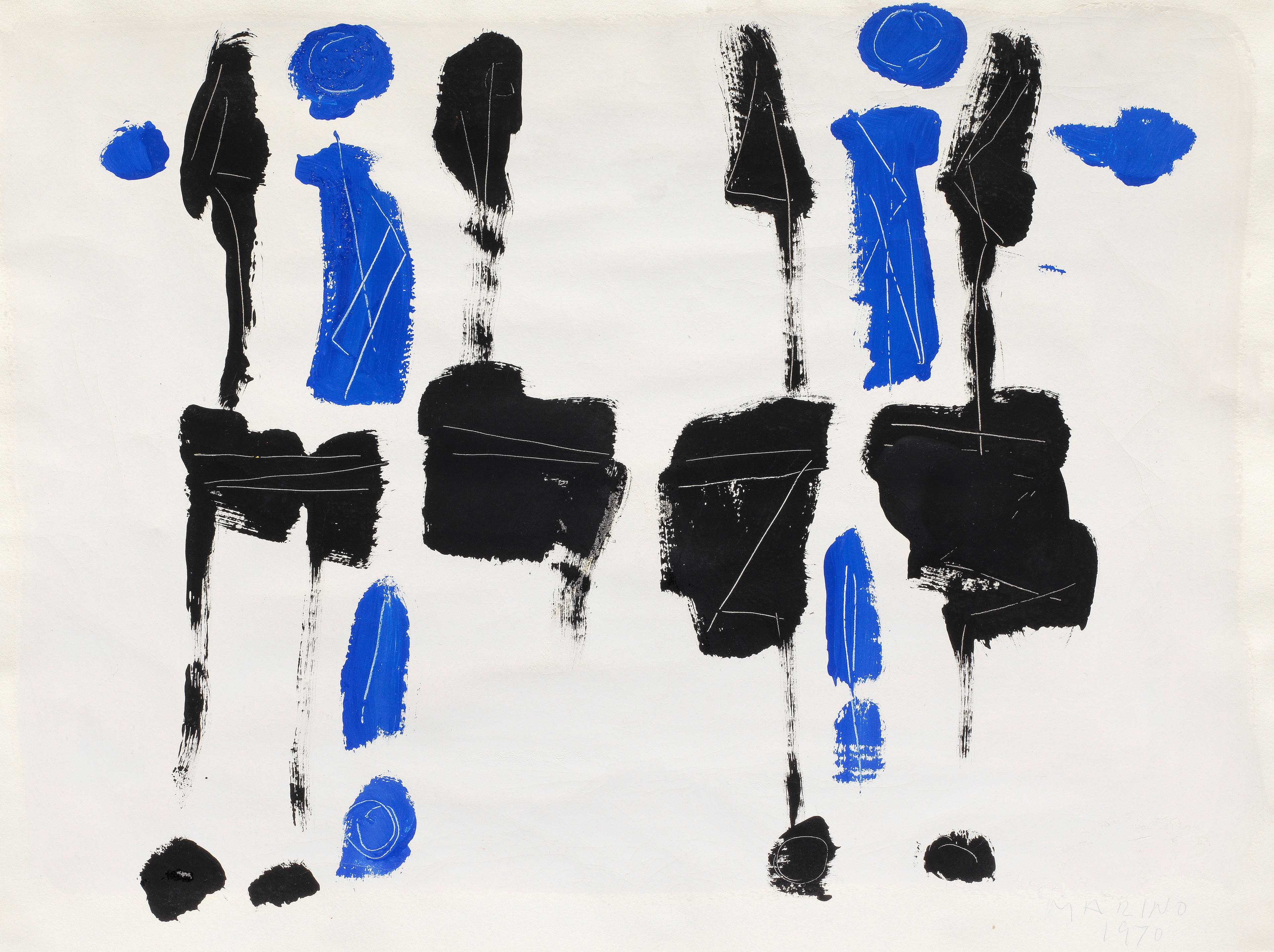
Testen Sie LotSearch und seine Premium-Features 7 Tage - ohne Kosten!
Lassen Sie sich automatisch über neue Objekte in kommenden Auktionen benachrichtigen.
Suchauftrag anlegen